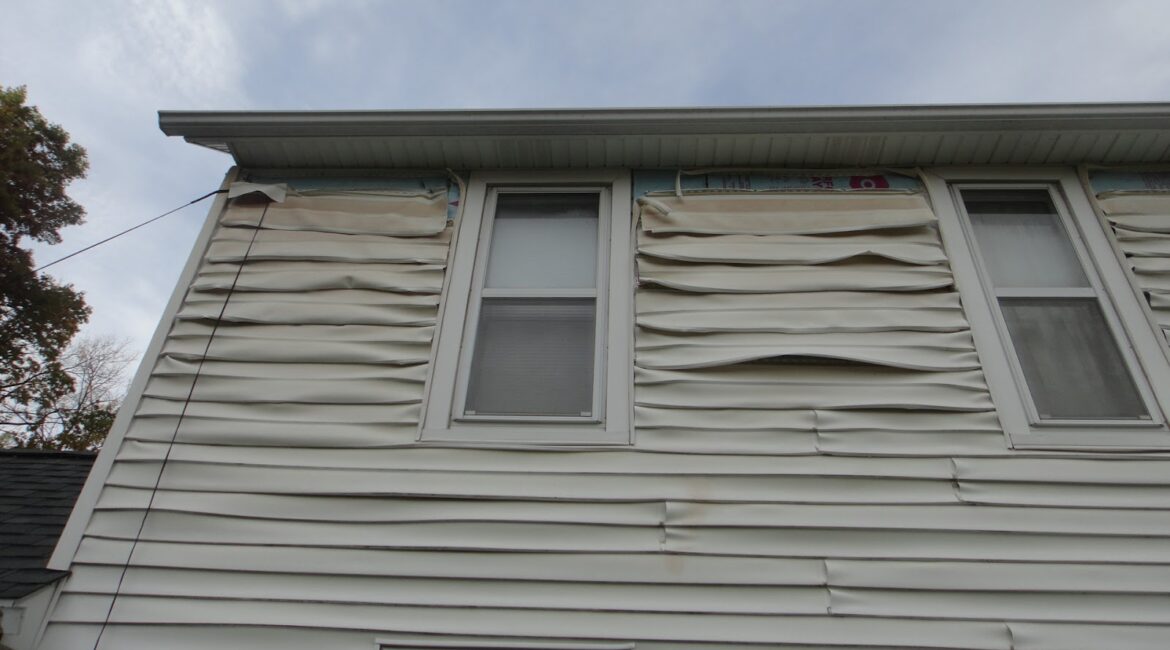Introduction – Vinyl Siding Removal & Disposal
Vinyl siding has been a popular choice for homeowners due to its aesthetic appeal. However, a lot of homeowners are finding their vinyl siding is starting to look rough for wear after years of sun, wind, rain, power washing, and heat cracking start taking its toll. one this happens, the best bet is to have it removed and dispose of it, but how? Being a dirty plastic, vinyl siding would have to be cleaned to be free of dirt and grime before any possible recycling center would touch it which normally means your old vinyl is destined to a landfill. For those who want to go the distance and try to recycle their old vinyl, they often find the local recycling centers are unable to process the PVC-based materials and they end up in a landfill anyway. In this guide, we will explore the steps required to recycle your vinyl siding. Although a long and daunting process, recycling, when possible, is certainly the best approach. Read our guide for more information and if you are looking for a superior alternative to vinyl to reside your home, we recommend checking out our Steel Siding page for more information or give us a call at 1-855-MAXWALLStep 1: Preparation and Safety Measures
Before you begin the removal process, it’s essential to take some precautions to ensure a safe and efficient procedure. Here are a few steps to follow:- Gather the necessary tools: You’ll need a pry bar, a utility knife, safety goggles, gloves, and a ladder or scaffolding, depending on the height of your siding.
- Turn off any electrical power sources: If your siding is close to electrical outlets or fixtures, switch off the power to avoid potential accidents.
- Wear protective gear: Safety goggles and gloves will protect your eyes and hands from debris, sharp edges, and potential exposure to harmful substances.
Step 2: Vinyl Siding Removal
Once you’re ready, follow these steps to remove vinyl siding from your home:- Start at the bottom: Begin by loosening the bottom-most siding panel. Insert the pry bar behind the panel and gently apply pressure to detach it from the underlying wall. Continue doing this until the panel is completely free.
- Remove subsequent panels: Work your way up, removing one panel at a time. Remember to be gentle and avoid bending or damaging the panels.
- Pay attention to trim and accessories: Trim pieces, such as corner posts, window trim, and door trim, may also need to be removed to access the siding properly. Take care not to damage these pieces during the removal process.
- Handle fragile or brittle siding with care: Older vinyl siding may become brittle and more prone to breaking. Take extra caution when removing such siding to minimize damage.
Step 3: Responsible Disposal
Once you have successfully removed the vinyl siding, it’s crucial to dispose of it responsibly. Here are a few options to consider:- Recycling: Check if your local recycling center accepts vinyl siding. Some facilities have the capability to recycle PVC-based materials. Contact them to inquire about their requirements and drop-off locations.
- Reuse or donate: If your vinyl siding is still in good condition, consider donating it to organizations or individuals who may be able to utilize it for repair or construction projects. Reusing materials is an eco-friendly option that reduces waste.
- Waste disposal facilities: If recycling or reuse options are not available, you can contact your local waste disposal facility to inquire about their procedures for vinyl siding disposal. They may have specific guidelines for accepting this type of material.
Conclusion
Removing and disposing of vinyl siding is a daunting task but when faced with replacment of old vinyl siding, it is the best choice when it is possible to recycle. By following the steps outlined above, you can safely and efficiently remove the siding from your home. Additionally, opting for responsible disposal methods, such as recycling or donating, allows you to minimize environmental impact and contribute to a more sustainable future. So, whether you’re replacing your siding or addressing underlying issues, take the extra step to dispose of your vinyl siding responsibly.Vinyl Siding After Years of Jacksonville, FL Weather

Learn more about the benefits to steel siding or arrange for us to come out with samples by giving MAXWALLPRO a call today.




